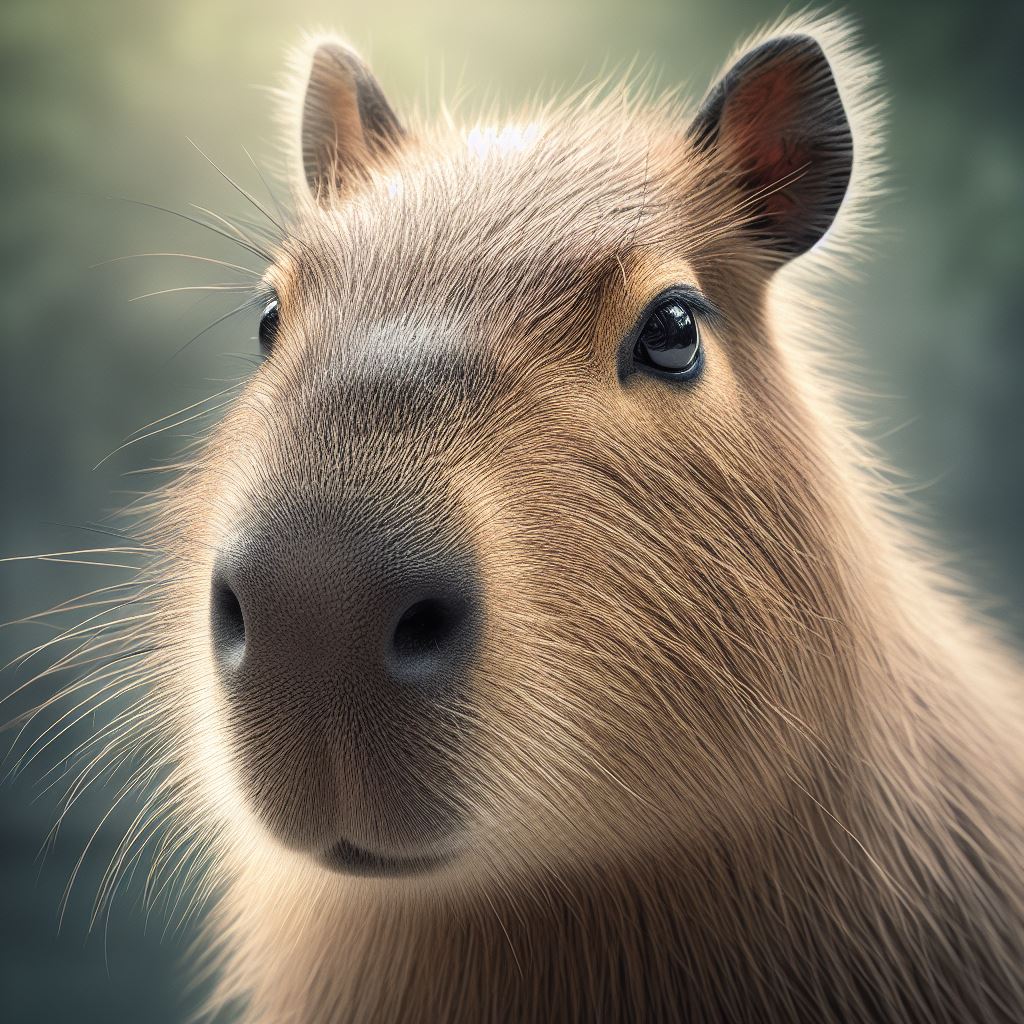Introduction
Kangaroo Fun Facts: 42 Amazing Things You Need to Know Now promises an epic joyride through the totally awesome world of our bouncy marsupial friends. From their amazing leaping abilities to the crazy things they keep in their pouches, this guide will blow your mind with radical roo knowledge. Get ready to become a certified kangaroo expert after reading these sweet facts!
When we think of kangaroos, we often first imagine their powerful hind legs that allow them to bound across the Australian landscape at speeds over 35 miles per hour. Their long, strong tails also come to mind as they use them for balance and support when hopping along. But there’s much more to kangaroos than meets the eye!
Kangaroos exhibit complex behaviors and adaptations that aid their survival in the harsh Australian bush. The main kangaroo species we’ll focus on are the large Red Kangaroo, the common Eastern Gray Kangaroo found along the southeastern coast, and the Western Gray Kangaroo of the arid interior regions.
Social Structure
Kangaroos live in organized social groups called “mobs” or “troops” that provide safety in numbers from predators like dingos and wedge-tailed eagles. A mob may have 10-30 kangaroos of varying ages and sexes led by a dominant adult male. Younger males will challenge the leader for dominance and the right to mate with the females.
Breeding and Development
The most amazing aspect of kangaroo reproduction is the female’s pouch where highly underdeveloped joeys continue to grow and nurse until they can emerge. Baby kangaroos are only the size of a jellybean at birth! The joey will stay in the pouch for 8-11 months before venturing out.
Habitat and Diet
Different kangaroo species are adapted for various habitats including forests, savannahs, scrubland and even deserts. But they all share a primarily herbivorous diet of grasses, leaves, and bark. Kangaroos conserve water efficiently and obtain much of their moisture from the plants they eat.

Let’s dig deeper into the unique traits and behaviors that enable kangaroos to thrive in the harsh Australian wilderness. I think you’ll be amazed by what we discover about these iconic mammals!
Kangaroo Species
Australia is home to over 50 different kangaroo species, each with unique adaptations that enable them to thrive in their native habitats. Here we’ll highlight details on the three most common and iconic kangaroo species.
Red Kangaroo
The Red Kangaroo is the largest surviving marsupial and can grow over 6 feet tall and weigh 200 pounds! But their most impressive feature is definitely their powerful hind legs and tremendous hopping ability.
With each bounce, Red Kangaroos can leap up to 30 feet in a single bound and reach speeds over 35 mph! This is key for escaping predators and covering large distances to find scattered food and water sources across the arid Australian outback where they are most common.
In fact, a Red Kangaroo’s legs are so specialized for hopping that their walking pace is actually quite awkward and slow. Their long muscular tail is vital for balance and propulsion when jumping at high speeds. Red Kangaroos conserve water very efficiently and can go months without drinking under harsh desert conditions.
Eastern Gray Kangaroo
At about 4-5 feet tall and 90 pounds, Eastern Gray Kangaroos are smaller and darker in color than their Red cousins. They prefer forested areas and coastal scrub habitat in eastern Australia.
Eastern Grays gather in large mobs of 10-20 individuals for safety from key predators like dingos and wedge-tailed eagles. The dominant male will mate with multiple females and the mob will communicate using their foot thumps as alarm signals.
Eastern Grays are very common and abundant due to the lusher habitat along eastern Australia. Sadly they often get hit by vehicles when grazing near roads at night. Their populations are considered stable and they are hunted for commercial kangaroo meat.
Western Gray Kangaroo
As their name suggests, Western Gray Kangaroos occupy the more arid southern and western regions of Australia. They prefer open grasslands and scrublands to forests.
Similar in size to Eastern Grays at about 4 feet tall, Western Grays have a paler gray coat to blend into their drier habitat. They also have longer shin bones which may help increase their hopping speed and range in search of food and water.
Western Grays form smaller groups of just 2-3 individuals. Males will fight by kicking their opponents using their powerful clawed hind feet. Let’s now explore some of the Gray’s unique adaptations…
Unique Kangaroo Traits
Now that we’ve covered the major kangaroo species, let’s explore some of their unique adaptations that enable their iconic hopping locomotion and survival in the harsh Australian outback.
Powerful Hind Legs
The massive hind legs of kangaroos are their most distinctive feature. Kangaroos use their long feet and sharp claws to push off the ground with tremendous force, propelling them into bounding leaps at speeds over 35 mph.
Their leg muscles devote more than half their body weight to powering each jump. With each leap, Red Kangaroos can soar as high as 6 feet vertically and over 30 feet horizontally! This allows them to cover large distances efficiently in search of scattered food and water sources.
Kangaroos have unusually short forearms compared to their massive hind legs. In fact, their walking gait is quite awkward as they have to pull their weight forward with their front paws. But this uneven proportions allow their legs to function like coiled springs for explosive jumping power.
Long Tail
A kangaroo’s thick, muscular tail is nearly as long as its body. They use their tail as a third leg when standing upright and as a counterbalance when hopping. Their tail also provides propulsion to assist the hind legs.
Without their tail for balance, kangaroos would topple over forwards due to their massive hindquarters and light forelimbs. The tail acts like a rudder, adjusting position midair to maintain stability when jumping at high speeds.
Pouch
Female kangaroos have an amazing Forward-opening pouch on their abdomen to nurture developing joeys after giving birth. The joey is born at a highly premature stage, less than 1 inch long and weighing about a gram!
The tiny blind joey instinctively crawls into the safety and warmth of the pouch. There it will latch onto one of four teats and continue to develop for 8-11 months until mature enough to emerge. The joey will periodically leave the pouch but frequently return for milk and comfort as it grows.
Now let’s explore how kangaroos utilize these adaptations through their daily behaviors and habits…
Kangaroo Behaviors
The daily habits and behaviors of kangaroos showcase how their unique adaptations enable them to survive and thrive in the harsh Australian bush. Let’s explore how kangaroos use their powerful legs, tails, and pouches through common activities and rituals.
Social Groups
Kangaroos live in organized social groups called “mobs” or “troops” for safety, companionship, and collective care of the young. A mob may consist of 10-30 kangaroos of mixed ages led by a dominant adult male.
Young males will challenge the leader to “boxing” matches to establish dominance. The mob will thump their feet as an alarm if threatened and can rapidly hop away using their powerful legs. This group strategy provides safety in numbers against predators.
Diet
All kangaroos are herbivores, using their hopping ability to forage for grasses, leaves, small shrubs, and bark across vast distances. Their forestomachs allow them to extract nutrients from fibrous vegetation.
Kangaroos spend most of the day grazing and resting. They conserve water efficiently through their food and licking dew off plants. Their nocturnal behavior also helps them avoid daytime heat while foraging.
Breeding
The dominant male (boomer) mates with multiple females (flyers) in the mob. He can use his forepaws to grip females during mating. After 33 days gestation, a tiny premature joey is born and crawls into the mother’s forward-facing pouch.
The joey will nurse and continue growing in the safe, warm pouch for 8-11 months. It will periodically emerge to nibble grass and then return to the pouch when needing rest or protection. This development period allows joeys to have a close maternal bond.
Boxing
Males often fight by kicking each other with their clawed hind legs to establish dominance. They balance on their tails and punch with their short forearms. This behavior gave rise to the term “boxing kangaroos” although they mainly use kicks.

The winner earns the right to mate and gain access to the best food resources. The loser retreats with a few scratches and bruises. Let’s now turn to the conservation issues facing kangaroos today…
Threats and Conservation
While kangaroos continue to be abundant and iconic symbols of Australia, some concerning threats face certain kangaroo populations today. Habitat loss, hunting, collisions, and climate change all impact kangaroos. Let’s explore these threats and conservation efforts working to protect kangaroos.
Habitat Loss
Destruction and fragmentation of forests, savannahs, and scrublands for farming, livestock grazing, and urban development has reduced available habitat for many kangaroo species.
The loss of natural habitat also brings kangaroos into closer contact with roads and humans as they search for food, leading to more vehicle collisions. Protecting large contiguous wild habitats will be key for kangaroo conservation.
Hunting
Kangaroos are hunted commercially for their meat and hides. Over 2 million kangaroos are harvested annually in government regulated programs. The meat is exported globally while hides are made into clothing and soccer shoes.
For species with abundant stable populations like Eastern Gray Kangaroos, regulated hunting at current levels is considered sustainable. But for threatened species, restrictions on hunting quotas and permits are necessary.
Vehicle Collisions
Roads and traffic pose a major hazard to kangaroos which frequently collide with vehicles at night while crossing roads or grazing roadside verges. Over 90% of animal collisions in Australia involve kangaroos.
Fencing along roadways, underpasses, and driver awareness can reduce kangaroo-vehicle collisions. But as human infrastructure keeps expanding, this issue will require ongoing mitigation.
Conservation Efforts
Several kangaroo species like the Red Kangaroo are currently secure. But others have declined enough to be listed as threatened or endangered by the IUCN.
Monitoring populations, regulating hunting, combating illegal poaching, and preserving habitat will be key conservation goals going forward. With these efforts, hopefully our iconic kangaroos will continue bounding through the Australian bush for centuries to come!
Conclusion
Our journey uncovering fascinating kangaroo fun facts has come to an end. Let’s recap what we’ve learned about these amazing iconic marsupials of the Australian outback.
Summary
We explored the three main kangaroo species – Red, Eastern Gray, and Western Gray. Each is adapted for survival in different Australian habitats from deserts to forests.
Kangaroos have powerful hind legs for hopping at speeds over 35 mph, using their muscular tails for balance. Females have a forward-opening pouch to raise immature joeys after giving birth.
Kangaroos live in social groups called mobs for safety, grazing on vegetation. Dominant males mate with multiple females. They establish hierarchy through ritualized “boxing” matches kicking with hind legs.
Interesting Facts
Some of the most fascinating kangaroo traits include:
- Their ability to leap 30 feet in one bound!
- Using kicks and forearms to box each other for dominance.
- Female’s pouch for carrying tiny underdeveloped joeys.
- Speeds over 35 mph aided by their long tails.
- Organized social structure for rearing young as a mob.
Call to Action
I hope you’ve enjoyed this glimpse into the marvelous world of kangaroos! To witness their iconic bounding hops firsthand, consider an ecotourism trip to Australia. Zoos worldwide also provide opportunities to observe kangaroo behaviors and adaptations up close.
Let’s all advocate for habitat conservation to protect Australia’s remaining wild kangaroo populations. With increased awareness and sustainable practices, we can ensure kangaroos continue hopping through the outback for generations to come.
Thank you for your interest in these amazing creatures. Please share any other fascinating kangaroo facts you know!
Kangaroo Fun Facts – Frequently Asked Questions
This FAQ provides more details on kangaroo biology, behavior, conservation, and where to see kangaroos based on common reader questions. Learn fascinating kangaroo fun facts now!
Q: How fast can kangaroos hop?
A: Red kangaroos are the fastest species, reaching speeds over 35 mph aided by their long tails and huge hind legs. The typical hopping speed of most kangaroo species is 15-20 mph.
Q: Why do kangaroos have pouches?
A: Female kangaroos have forward-opening pouches to protect and nourish joeys after giving birth until they mature, usually for 8-11 months. The pouch provides safety, warmth and bonding.
Q: What do kangaroos eat?
A: Kangaroos are herbivores, feeding on grasses, leaves, bark and other vegetation. Their forestomachs allow them to extract nutrients from fibrous plants.
Q: How do kangaroos socialize?
A: Kangaroos live in organized social groups called mobs or troops for safety and communal care of offspring. A dominant male leads with a hierarchy established through ritualized fights or “boxing.”
Q: Why are kangaroos iconic symbols of Australia?
A: Kangaroos are abundant nationwide and their hopping locomotion is unique. Kangaroos represent the Australian outback and wildlife worldwide.
Q: How can I see kangaroos in the wild?
A: The best places to spot kangaroos in Australia are protected habitats like Murramarang National Park and Pinnacles Desert at dusk or dawn when they are active.
Q: Are kangaroos endangered?
A: Some species like the Red kangaroo have abundant stable populations. But habitat loss has threatened others like the Tree kangaroo, now considered endangered.
Q: Where can I see kangaroos in captivity?
A: Zoos worldwide house kangaroos. Notable zoos include San Diego Zoo, Columbus Zoo and Aquarium, and Australia Zoo in Queensland.
Check out more kangaroo fun facts and resources by reading our in-depth blog post content! Let us know if you have any other kangaroo questions.
Downlad App Coloring Page Here




